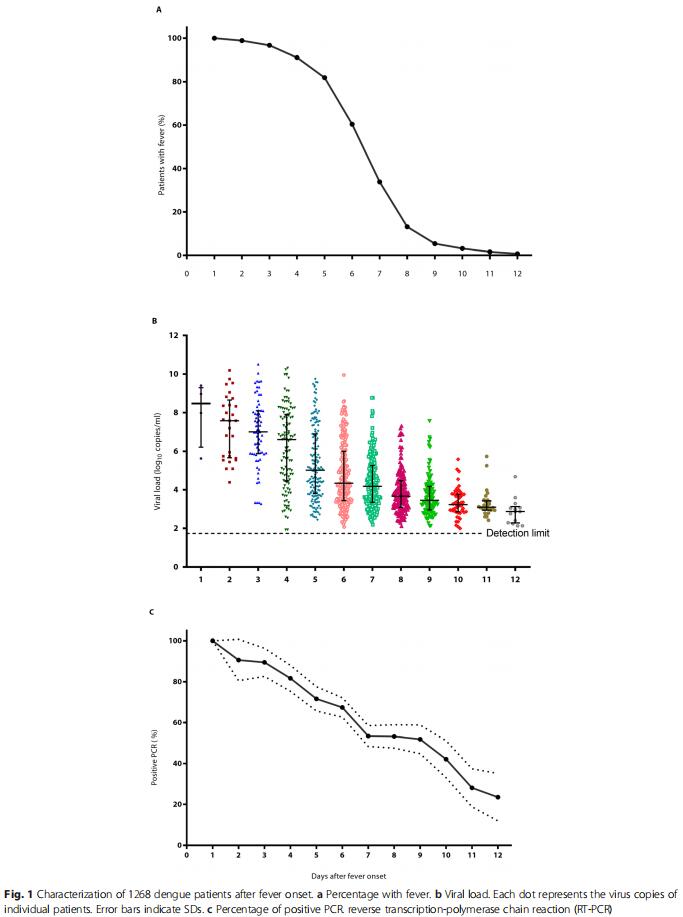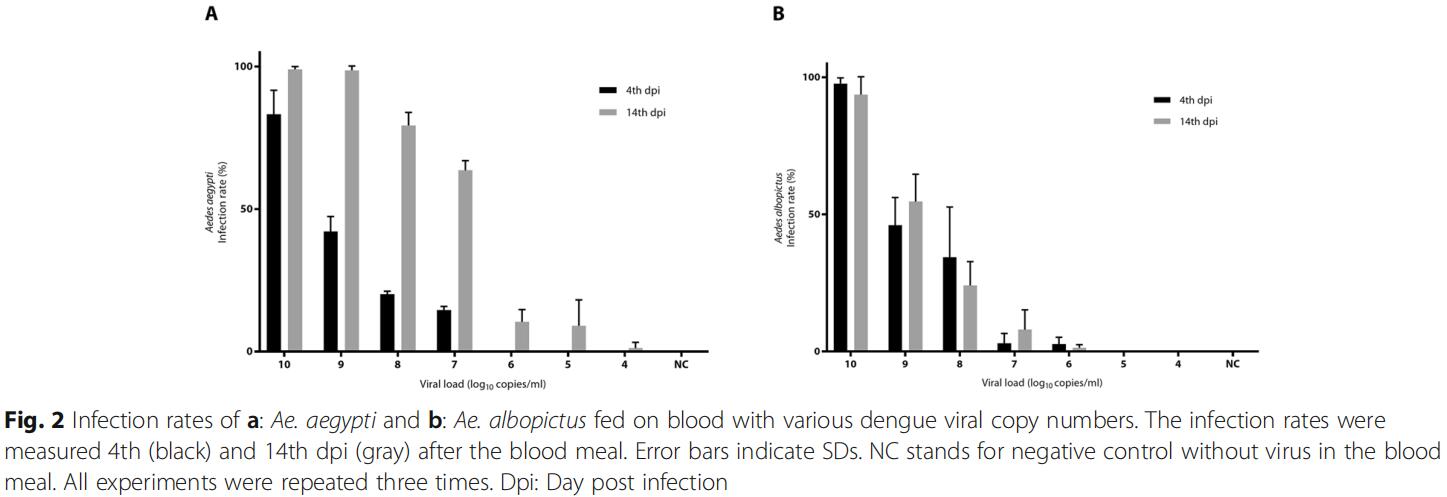Ye Xu1#, Ling-Zhai Zhao#, Ya-Zhou Xu, Jin-Bao Gu, Kun Wu, Zhi-Qiang Peng, Xiao-Hong Zhou, Fu-Chun Zhang*, Xiao-Guang Chen*
ABSTRACT
Background: Dengue is a re-emerging public health problem and mosquito-borne infectious disease that is transmitted mainly by Aedes aegypti and Ae. albopictus. Early diagnosis, isolation, and treatment of patients are critical steps for dengue epidemic control, especially to prevent secondary transmission of dengue virus (DENV). However, little is known about defervescent dengue patients as a source of infection.
Methods: This case study describes 1268 dengue patients hospitalized at Guangzhou Eighth People’s Hospital from June 2013 to December 2014. The viral loads of each individual were measured using real-time reverse transcription-polymerase chain reaction. Ae. aegypti and Ae. albopictus were exposed to blood meal with gradated dengue viral loads to characterize the relationship between viremia in dengue patients and the vector competence of vector mosquitoes.
Results: The viral numbers in the blood were measured, ranging from 108 to 103 copies/ml from day 1 to day 12 after fever onset. Vector competence analysis of Ae. aegypti and Ae. albopictus indicated that viremia > 104 copies/ml can still infect vector mosquitoes, which implied that the defervescent dengue patients might be a source of infection.
Conclusions: The results of this study indicate that some defervescent dengue patients still have sufficient viral load to infect vector mosquitoes. Therefore, the protection against mosquito biting for these people should be extended to prevent secondary transmission events.
Infectious Diseases of Poverty. 2020; 9: 17.
DOI : https://doi.org/10.1186/s40249-020-0631-8

